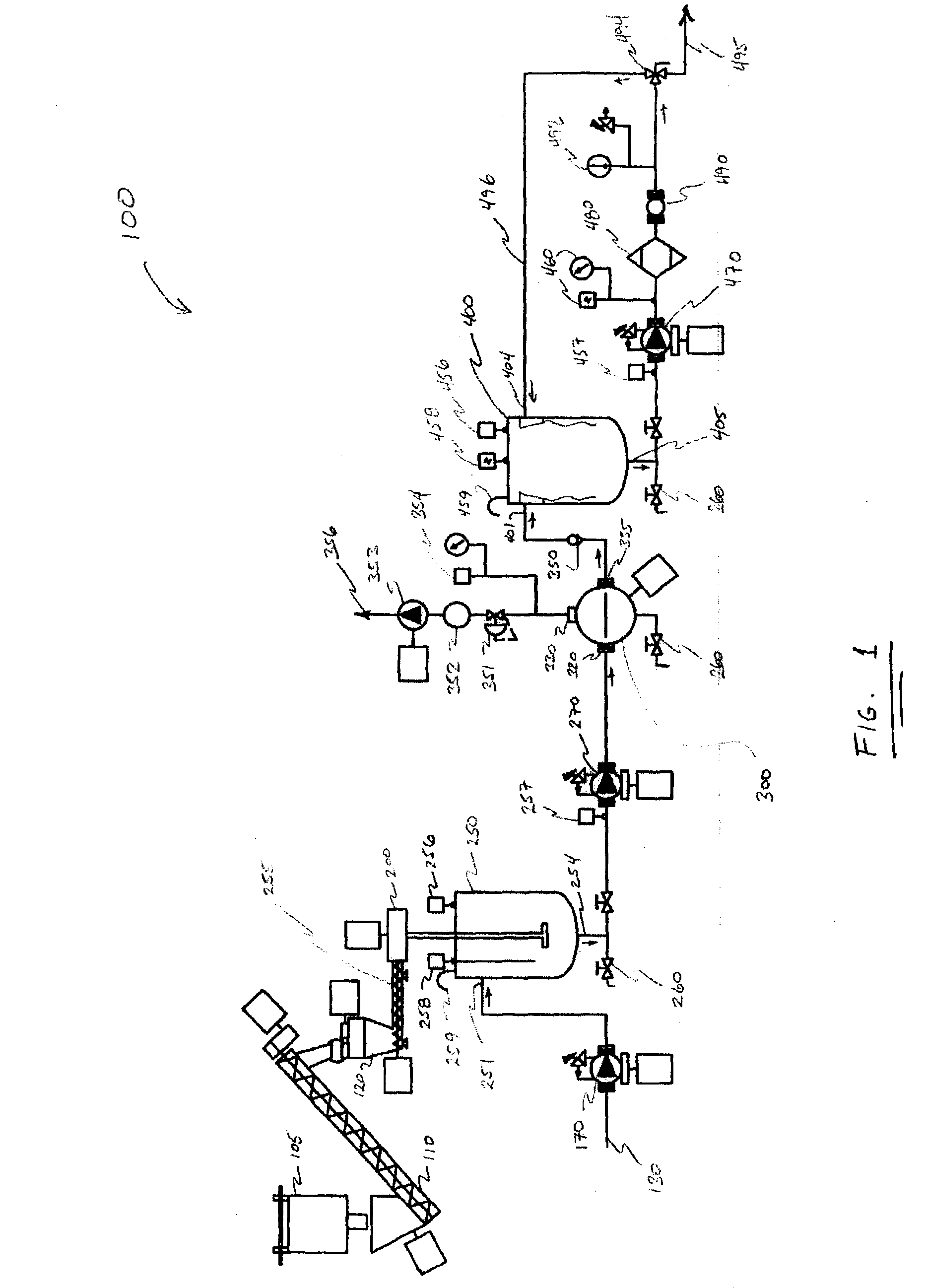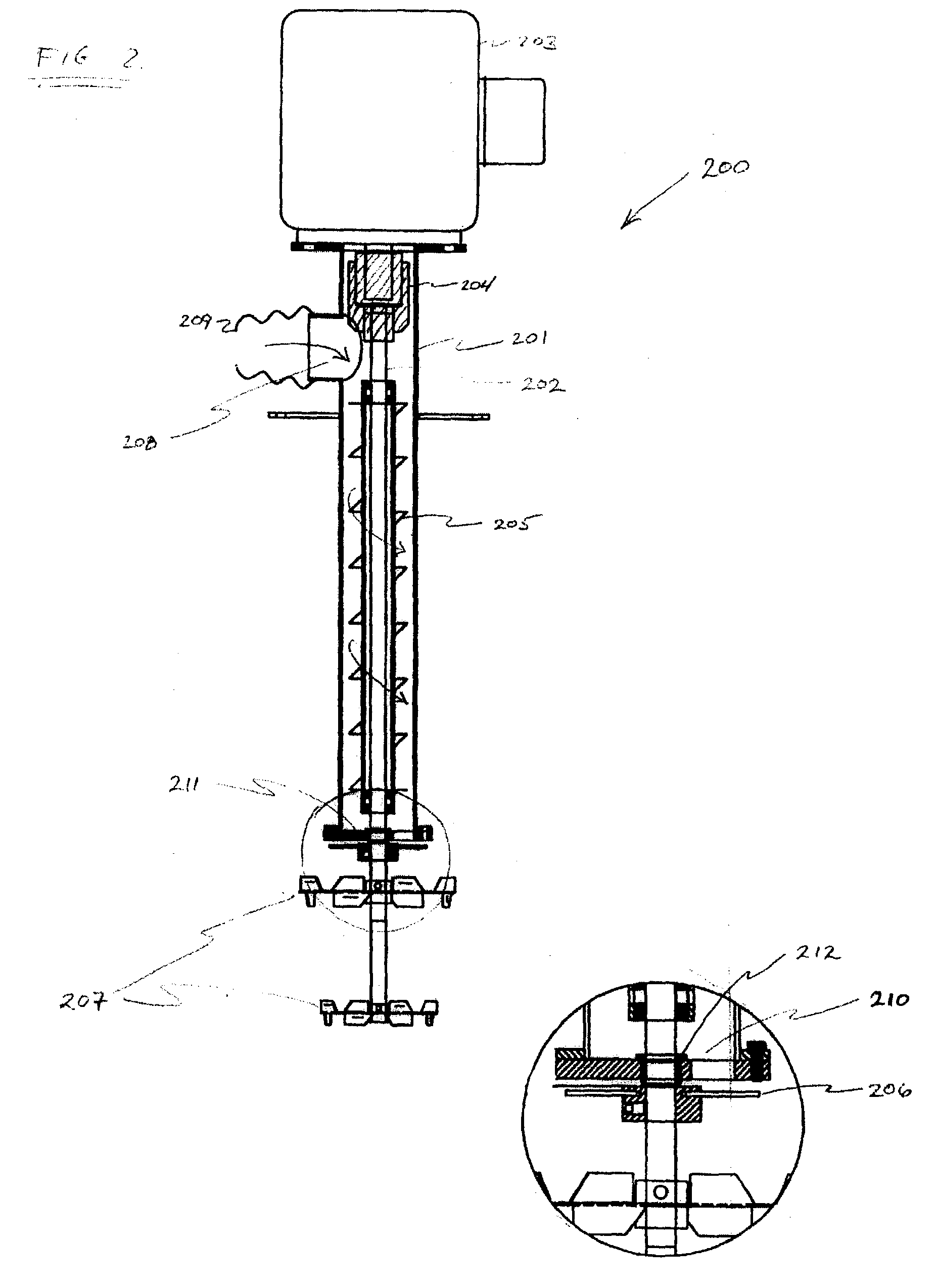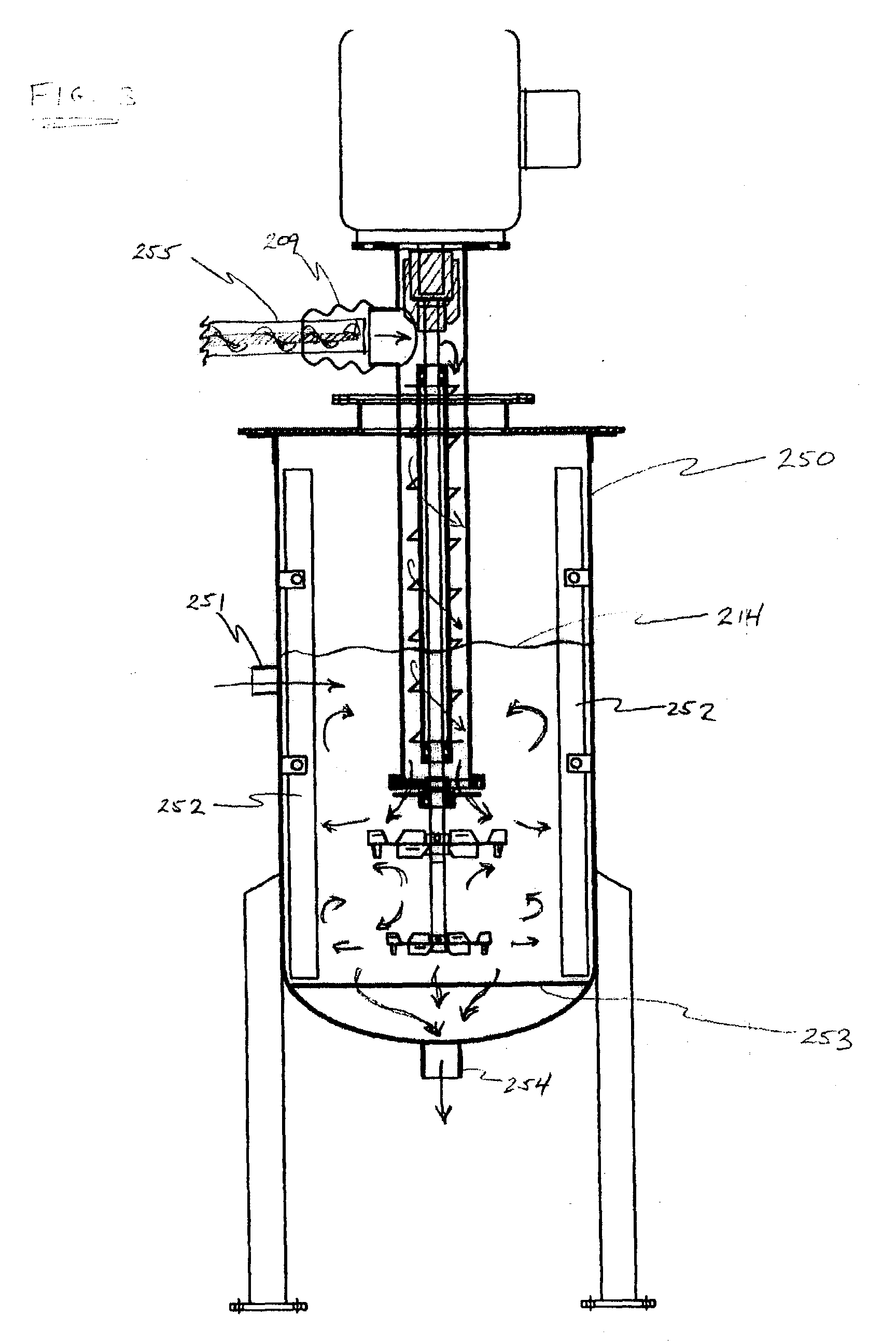Apparatus and method for continuously removing air from a mixture of ground polyurethane particles and a polyol liquid
a technology of ground polyurethane particles and polyol liquid, which is applied in the direction of liquid degasification, centrifuges, separation processes, etc., can solve the problems of urea linkages in the polymer, limited resistance to applied load, and inability to recover the original shape slowly, so as to reduce the potential for bubble entrainment and facilitate cleanup and shutdown
- Summary
- Abstract
- Description
- Claims
- Application Information
AI Technical Summary
Benefits of technology
Problems solved by technology
Method used
Image
Examples
Embodiment Construction
[0042] A mass of 83.5 kg of VORANOL 3010A polyether polyol from Dow Chemical Co. was initially charged to a 30-gallon mix tank. To this tank was added 16.7 kg of a powder of finely ground polyurethane foam with a maximum particle size of 250 microns. The initial batch was mixed thoroughly using the mixer shown in FIG. 2. The slurry obtained had a concentration of entrained air of about 10% by volume.
[0043] Using the process shown in FIG. 1, slurry was pumped from the mix tank, through the vacuum centrifuge and surge tank, and into a storage vessel. The concentration setpoint was 20 pphp (i.e., 20 parts of powder per 100 parts of liquid, or 16.7% by mass), and the flow rate setpoint was 20 kg / min of slurry. Samples of the slurry were taken as it left the process to go into the storage vessel. These samples were tested for slurry concentration by separating the powder from a known weight of slurry by means of filtering the powder from the slurry, washing away the polyol with methylene...
PUM
| Property | Measurement | Unit |
|---|---|---|
| absolute pressure | aaaaa | aaaaa |
| absolute pressure | aaaaa | aaaaa |
| absolute pressure | aaaaa | aaaaa |
Abstract
Description
Claims
Application Information
 Login to View More
Login to View More - R&D
- Intellectual Property
- Life Sciences
- Materials
- Tech Scout
- Unparalleled Data Quality
- Higher Quality Content
- 60% Fewer Hallucinations
Browse by: Latest US Patents, China's latest patents, Technical Efficacy Thesaurus, Application Domain, Technology Topic, Popular Technical Reports.
© 2025 PatSnap. All rights reserved.Legal|Privacy policy|Modern Slavery Act Transparency Statement|Sitemap|About US| Contact US: help@patsnap.com



